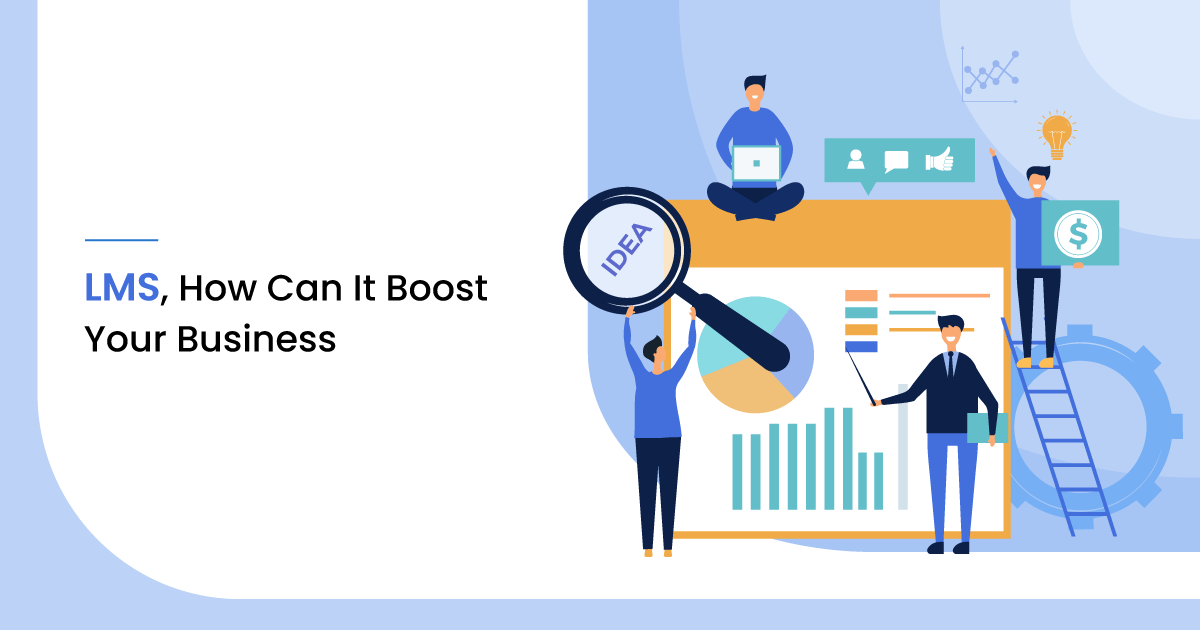Reading Time: 4 minutes
As more and more businesses switch from traditional to online employee training, the Learning Management System (LMS) continues making massive inroads into the vital activities of a plethora of small family-owned firms, middle-sized companies, and huge corporations. Suppose you’re still hesitant about implementing the LMS methods and techniques in your workplace or lack essential knowledge to venture to give this new trend a shot. In that case, you will be benefited from today’s article. You’re going to learn the nuts and bolts of the LMS, which will hopefully help you decide if it’s a worthwhile investment for you.
A Few Words About LMS
Essentially, the LMS is a platform designed with online learners in mind. Its goal is to facilitate, simplify, and universalize digital learning across various industries and spheres. The main noteworthy features of LMS platforms lie within its very abbreviation.
L – Learning.
The LMS is all about learning. If you decide in favor of the LMS, you’ll be able to create a universal source of effective online courses, curriculam, regulations, and other types of training material to optimize the employee or student training process. You’ll manage to easily facilitate the flow of expertise and knowledge sharing within a single organization. What’s more, it allows you to keep track of the progress and incorporate changes or corrections when necessary. To streamline and enhance your eLearning experience, consider using the WordPress LMS plugin.
M – Management.
The LMS provide you with the tool necessary to boost your business performance and overall efficiency. You can manage both learning materials and learners using convenient tools and techniques. To start the online training session, just add a learner and assign them the required task. In-class sessions also can be managed by means of such features as ‘Calendars’ and ‘Managing Users.’ What’s more, you can evaluate the efficacy of your training courses, maintain performance of the individual learners, and check the team members’ skill set acquired as a result of this or that training event.
S – System.
The LMS utilizes the cutting-edge techniques to streamline and automate the dreariest and most mind-numbing work like maintaining training records, documentation and delivery of learning materials, grading, processing statistics, etc. Not to mention the fact that you can easily check the uploaded documents for mistakes and typos thanks to the integrated spell checking tools. The computer system also enables you to deploy and manage educational courses without regard to geographical limitations. Thus, you receive the opportunity to store and create learning and development programs, offer your learners instant access to training materials, effectively evaluate the results, and provide timely feedback.
Types of LMS
When it comes to picking an LMS type that’s right for your business, you want to learn more about the existing learning platforms and their benefits.
Corporate
Corporate LMSs grant you easy access to eLearning courses and automate each stage of the employee training process. This type of LMS platform is more geared toward practical applications and calculating return on investments within a certain organization.
Academic
Designed with e-learners in mind, academic LMSs are aimed at helping students successfully complete a certain course. To that end, academic LMSs are focused on delivering theoretical knowledge to target audiences and coming up with time frames for educational institutions.
Cloud-Based (SaaS)
As its name suggests, cloud-based LMS are hosted on the cloud. If you opt for this type of LMS, you may spare yourself the effort of maintaining systems and paying for regular updates and upgrades. Cloud-based LMS eliminates the need to buy and install expensive software and maintain the company’s server. All your trainees need to do to join an event, meeting, or a training session is to log in to the LMS using their password and login details. Using cloud-based LMSs can be a great out-of-the-box solution for small businesses and organizations that want to benefit from LMS from the get-go but don’t have considerable funds at their disposal.
Self-Hosted
For those organizations that can afford to execute their creative potential, there are self-hosted learning management system platforms. They allow business owners to customize the interface and features for a better user experience. With this option, you’ll be able to craft professional-looking education and training courses, easily upload them to your platform, and monitor the progress.
Desktop
You may want to make use of LMSs that come in the form of good old desktop applications. They are believed to be more secure and allow for synchronization across multiple devices, which helps improve your team collaboration opportunities.
Mobile
Nowadays people do lots of things on the go. And work is no exception. You may opt for the mobile version of LMS if your e-learners are more comfortable using their portable devices. If you want your online courses to be accessible anytime, anywhere, mobile LMS apps are the best bet for you.
Why Use LMS
Now you know that learning management system is a piece of software used for publishing, monitoring, and delivering online education and employee training courses. The LMS keeps all the important data and materials stored in one place so that learners can easily log in, find, and avail themselves of the learning materials or familiarize themselves with the tasks you’ve assigned to them. With the help of LMS, you can easily track the progress your learners are making in a course and provide feedback or corrections whenever necessary. So, whether you’re dreaming of deploying global online training initiatives or just want to motivate your team to hone their professional skills and share expertise with peers, you’ll find the LMS option particularly attractive.
Originally published October 20, 2020 , Updated : October 20, 2020
Need Any Technology Assistance? Call Pursho @ 0731-6725516







